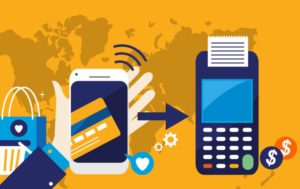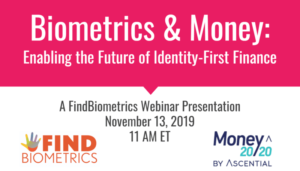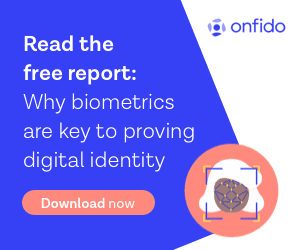Everyone wants to keep their money secure, and everyone wants easy access to it. That in itself has long been a bit of a dilemma, and it has only intensified with the digital revolution that has converted physical money into ones and zeros around the world. So it’s no wonder that biometric technologies, with their capacity to improve upon password-based security systems while making authentication even more convenient, have become so popular in the financial world.
For this year’s Financial Biometrics Month, FindBiometrics will be taking a look at some of the biggest innovations and technological trends in this area. There’s a lot going on – a whole year could be devoted to biometric FinTech – so the best place to start is a primer on some of the more salient trends in play today.
The Mobile Channel
The trend of intensive digitization in financial services over the last several years has played out in tandem with the increasing use of mobile technologies, and especially smartphones. Whereas accessing your bank account online was considered an innovative concept just ten years ago, today a growing number of customers are using their mobile devices. Fortunately, the latter trend has emerged in conjunction with the mobile biometrics revolution first spearheaded by Apple in 2013, when the company introduced fingerprint scanning on that year’s iPhone. Now, fingerprint sensors are considered a standard feature on contemporary smartphones, with facial recognition currently being the big new modality.
This all adds up to particularly strong authentication for users trying to access online accounts, and a growing number of banks have leveraged authentication mechanisms based on fingerprint and facial recognition through their mobile apps. Indeed, banking customers are even setting up accounts using just their phones thanks to modern face authentication tech. These kinds of biometric technologies are also being used to authorize mobile payments, making even transactions within physical retail stores more secure and convenient.
Payment Cards Get an Upgrade
Of course, mobile payments still represent a relatively small proportion of the overall payments market, and in real-world transactions, payment cards are still the most popular option – especially as the use of cash continues to evaporate. This means that card-based transactions remain an appetizing target for fraudsters; and as the use of contactless payment cards for NFC transactions grows more popular, that means stolen payment cards can be used even when the thief doesn’t know the victim’s PIN.
Here, too, biometric tech is swooping in to save customers while keeping friction low in transactions. Fingerprint-scanning payment cards are shaping up to be one of the biggest trends in the payments industry, with a number of biometrics specialists and financial services institutions currently working together to get their solutions ready for market. Many expect large-scale commercialization to begin in 2020, which means that customers are going to get a major security upgrade, and even more consumers will feel comfortable embracing contactless card transactions.
If You Forget Your Wallet

Then again, payment cards themselves may eventually feel a bit old-fashioned, depending on how our third exciting financial trend plays out. This is the most tentative, but also perhaps the most exciting, new innovation in financial biometrics: the emergence of technologies linking payment accounts directly to users’ biometrics. This enables biometric payments – often referred to as “naked payments” – in which no physical accessory is needed to complete the transactions – not a card, and not even a smartphone. There are already operational systems that can link a user’s fingerprint to, say, a debit account, allowing them to make a purchase with a simple scan; and, as with mobile payments, facial recognition and other modalities are being explored for this application as well.
It’s probably going to take a while for biometric POS terminals to make their way to a substantial number of merchants, and the idea of paying for something with a fingerprint or a face scan is going to take some getting used to for a lot of consumers, as well. But the convenience of such a system is, for many, an appealing prospect; and with their plans to link tourists’ fingerprint data to their payment accounts and hotel bookings during the 2020 Olympics, Japanese authorities are showing how naked payments systems can be used to generate valuable data and prevent fraud. Few could have predicted the rise of mobile payments 20 years ago, and there are still a great many consumers who don’t see the wave of biometric payment cards coming… Maybe naked payments will be the next wave.
There’s still plenty more to say about financial biometrics, and a number of other innovative technologies and application areas to explore. So stay tuned to FindBiometrics through October as we continue to delve into these cutting-edge solutions throughout Financial Biometrics Month.
*
Financial Biometrics Month is made possible by our sponsors: IDEMIA, BioConnect, and Onfido.
–
October 3, 2019 – by Alex Perala











Follow Us